Don't jump to conclusions.
That should be a bumper sticker for all product managers who own the product discovery process. And product discovery itself is a bumpy ride through a winding road without a map.
However, it is also the best way to foolproof your product development journey and minimize critical risks. It rebalances the focus from building the thing right to building the right thing before you actually enter the delivery process.
Read on to learn how product discovery can improve your product development process, bring actionable insights to the table, and don't let you build upon guesswork.

What is product discovery?
If you take a high-level look at the product development process, you’ll notice that discovery and delivery are two principal phases. In most layman's terms, product discovery focuses on what you’re going to build, while product delivery—focuses on building it.
The main purpose of product discovery is to reduce uncertainty of which problems are worth solving, and which solutions are worth building.
Okay, but how do you decide? That’s where the good part starts. The discovery process should be scientifically sound, built upon strong evidence collected first-hand.
That's why you need to engage your customers—the crucial group in the process. A proper product discovery starts with the customers’ needs, desires, and pain points.
Only discovering what bothers and drives them will make your product stick, and only this can translate into value for both your business and your customer.
What’s the story behind product discovery?
It sort of began with…frustration.
Imagine the situation when your sales rep comes and says they have this fantastic feature idea one of the customers shared. They already discussed it with the CEO (or any C-level people above your paygrade), and [drumroll] "We're building it!" 🫠
Nowadays, we at least know this is not the right way. But if we go back to the late 1990s, it was the only way. Big board budget meetings with business stakeholders decided on the product roadmap. There are countless stories of spectacular product failures because of top-down management and the waterfall approach.
Eventually, software engineers mutinied. And that's when the Agile Manifesto was coined—at the dawn of the new millennium, forming the fundaments of modern digital product development. A couple of years later, Marty Cagan coined the term "product discovery" and described it in his groundbreaking book "INSPIRED."
Fast-forward to today, and we still have much to do in figuring out the right products. Decision-makers often have a hard time letting go of strategic decision-making. But let's take one step at a time and break the product discovery process into manageable parts.
Mindset for the product discovery process
Plan outcomes, not outputs
"Fall in love with the problem, not the solution."
—Marty Cagan, INSPIRED
The first and foremost assumption is to stop thinking in outputs, or fixed solutions, and focus on outcomes. It is a hard but liberating mental shift that will grant you the flexibility needed to deal with your customer needs.
To give you an idea, an output could be a typical product roadmap element, let's say "design feature X", while an outcome could be "increase feature X usage." The difference is subtle, but it clearly shows the change in approach. While an output binds you to create a certain solution, an outcome provides a solution space open to testing different feature ideas, validating hypotheses, and finally coming up with an idea that best accommodates the value for your customers and your business goals.
You should also remember that "More often than not, our initial solutions don't solve the problem—at least not in a way that can power a successful business," as Marty Cagan points out. That's why thinking in outcomes is much more beneficial for your business.
Successful product discovery is customer-centric
Customer centricity is a non-negotiable element of any organization using the product discovery process. You need to expose your product team members to user feedback, democratize access to user insights, and conduct regular customer interviews.
"The less frequently teams speak to users, the less effective they are and the fewer chances they have to improve their research practices."
Tim Herbig, Product Management Coach & Consultant [source]
The product development process needs continuous discovery
Continuous product discovery is a framework coined by Teresa Torres, and it is one of the ways to approach the discovery process. No matter whether you use it or not, your team is always at some product discovery stage.
This is because the product discovery process is not linear, even if we describe it here as a sequence. You go back and forth from one step to another while trying to grasp the problem underneath and coining solutions.
Don't be put off. Instead, embrace continuous learning to make your digital products desirable.
What does the product discovery process look like?
Product discovery reigns two territories: the problem space, where you need to discover the real customer problem, and—the solution space, where you decide how to solve it best.
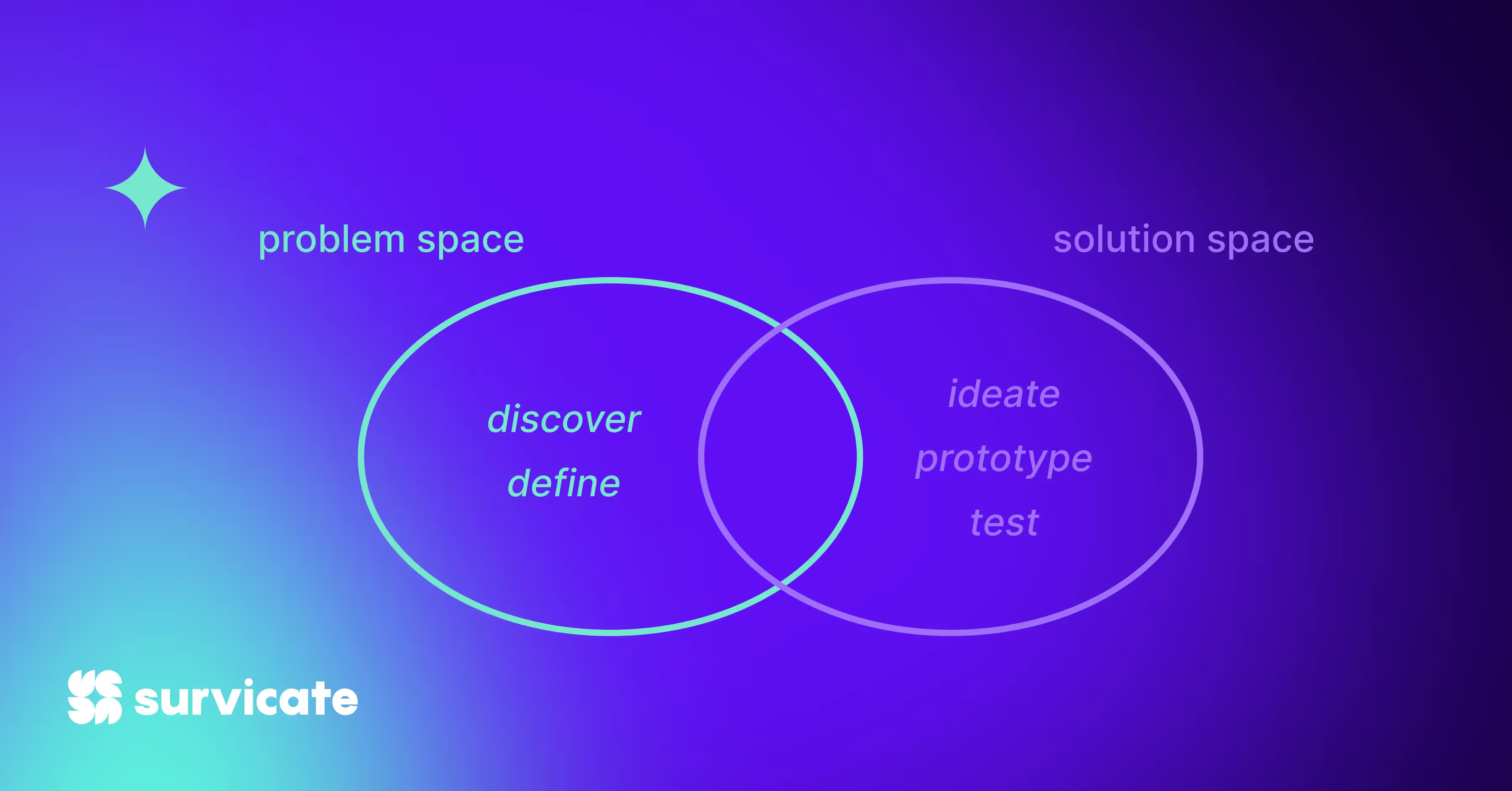
Problem space
Discover and understand
What is the problem that you're trying to solve? The fundamental question of this product discovery stage. The answer to it will shape all the following steps.
It's the time to put on your empathy suit and talk to your customers. Try to really understand what drives them, then forge the customer feedback into valuable insights. Do they have a problem to solve with your product? Or maybe it's a well-hidden desire that you need to grasp to accommodate it? Be it a customer pain point, need, or desire, it's a necessary opener to move forward.
In this initial part, product teams shouldn't be shy about the number of user research methods. Use both quantitative and qualitative research. Take advantage of product analytics, market research, and the intel you have about the competitive landscape surrounding your product.
However, don't forget to make it about your real users. Run customer interviews, observe focus groups, or ask for customer feedback with online surveys. Always stay curious about them, their motivations, and their behavioral patterns.
Now for some practical tips:
- Make customer interviews a habit. If you don't have the capacity for ongoing interviewing, employ surveys and feedback buttons so the feedback flows continuously in.
- Make sure you know what you're trying to learn; choose one topic only.
- Be aware of cognitive biases—if you ask direct questions about behavior, your customers may not be factual but give you the "ideal" answer. Consider asking them to share stories about recent experiences.
- It's your job to dig out the opportunities from your research. Don't ask your customers, "What are your pain points related to X?"
Define the problem
When you've collected enough customer feedback, you can proceed to the next step. Remember, it's not all about the quantity but the quality of user insights.
It's important not to fall into a feedback collection spiral—you don't need dozens of quotes, but you have to be able to identify patterns that recur, especially when combined with product analytics.
These patterns will form user stories with emerging needs and potential user pain points.
This feedback analysis should empower your product team to form hypotheses—the foundation for future solutions. The hypotheses about what your product should address should be clear, short, and to the point.
"The vast majority of product efforts fail not because of demand, but because they can’t come up with a solution good enough to get people to switch."
Marty Cagan, Founder at SVPG [source]
It is not a coincidence that most of the field experts suggest that most of the team effort should be spent in the problem space.
Defining the problem you're going to tackle is the critical part of the product discovery process. You need to be sure you grasp user problems, but at the same time, you do it in line with your product vision and strategy. It is not a linear process. You will probably go back and forth, engaging teams cross-functionally.
Solution space
Now, with the problem on the plate, you can move on to look for the best way to tackle it.
Ideate and prioritize
Two words: think BIG.
That's what brainstorming sessions are for. Leave aside feasibility, the business viability risk, and anything that binds you. No worries; reality will kick in soon enough, but brainstorming is to see new ideas fly high🚀.
Democratize the process and make ideation a cross-functional collaboration. Brainstorm sessions should generate quantity. Refining to quality comes at the next step. There are countless ideas for brainstorming sessions, but they all usually combine two parts:
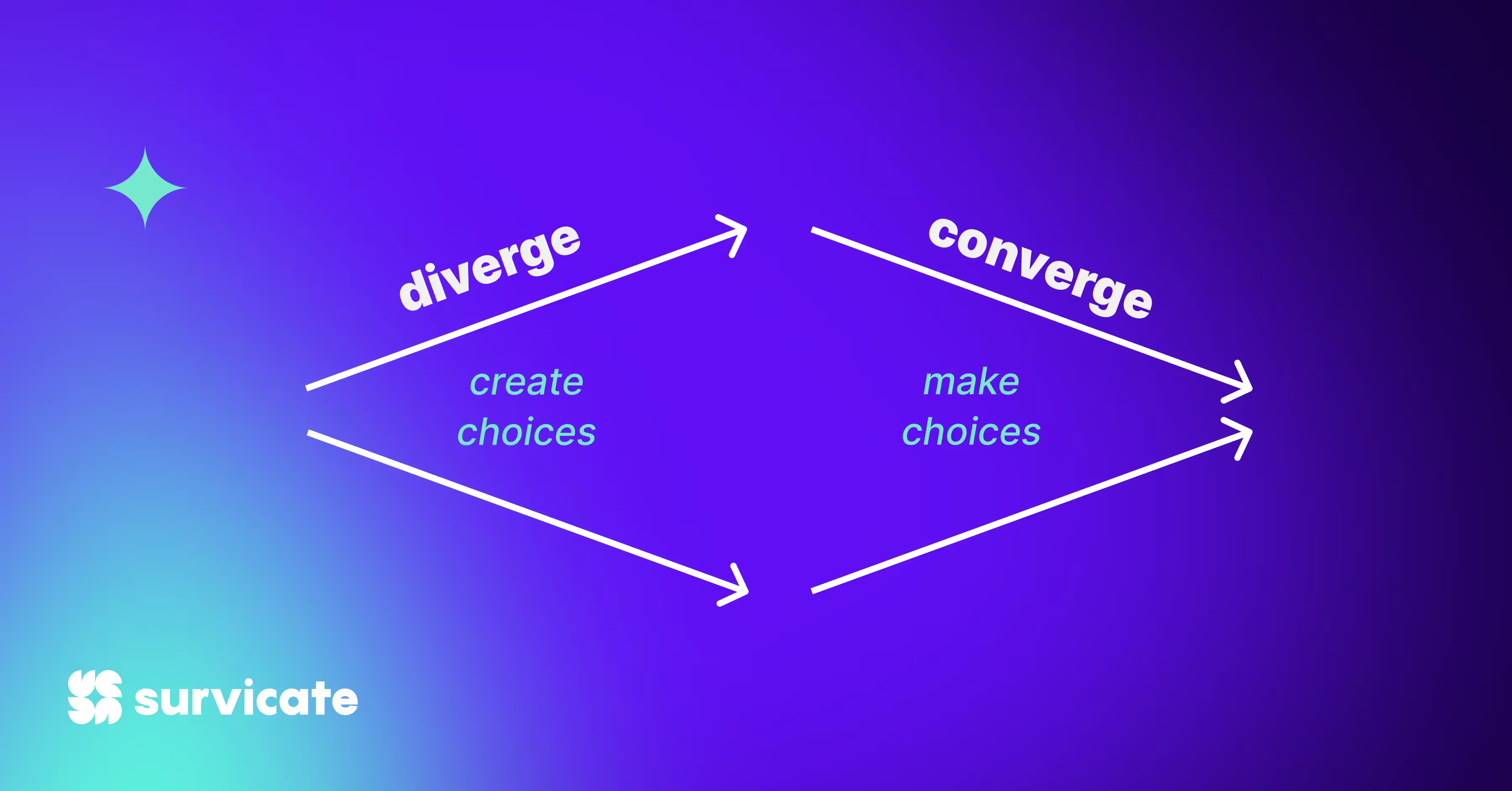
- The one when you generate (wild) ideas
- The one when you narrow down the list
To make it easier, you can first group similar ideas together and then invite brainstorming participants for a dot-voting session. This is a quick method for getting a handful of product/feature ideas for further steps.
Prototype and test
Preliminary advice: don't build a full-blown thing as long as possible.
Instead, go lightweight—develop a wireframe or create prototypes to share with potential users. Don't get too entangled in UI at this stage. You need to battle-test the functionality of your solution, not the grid design. One idea is to explore no-code options to cut the time and effort needed to present the solution.
You'd probably want to check multiple options here, so A/B testing tools can be handy.
Now, it's time to gather evidence to validate your assumptions. Make sure you gather the best information to evaluate your ideas. And for the record, "I would buy this feature" heard in one of your user interviews may not be the most convincing signal 🥺.
But yes, conduct user interviews for usability testing. They usually bring tons of actionable insights. You can also run usability surveys to make it more effortless, although the trade-off here is not being able to react in real-time to the feedback you get.
Refine your feature idea
Spoiler alert: that's when you finally get to build a minimum viable product (MVP).
But before.
Take a thorough look at the idea again, go through the user feedback gathered during the prototype testing, and possibly...go back.
You may discover a better solution that needs to be validated before moving it to production. As frustrating as it may feel, don't push an idea forward that you and your team are not 100% sure about. A prototype flop is a risk counted in the product discovery process.
When you finally have a feature idea that passed all tests, it's time to dice it into your product backlog and release it as an MVP.
Why do product teams badly need a product discovery process?
It aligns your product team and gives confidence
A well-implemented product discovery process aligns the whole team around product strategy, user needs and problems, and the product vision. It helps formulate outcomes that consider the customer value risk and the business goals. Product discovery provides autonomy for product teams to actively seek the best solution, and not just execute a rigid feature roadmap.
This sense of ownership and scientific experimentation along the way makes you and your product team confident about making strategic decisions.
It helps develop products that stick
It is a consequence of the previous paragraph. When you scientifically test your assumptions and validate them with your target audience, you don't wait for the luck to turn up. By exploring real users' problems, you're more apt to look for solutions that will melt their hearts.
Moreover, product discovery's continuous and iterative nature helps you adapt to ever-changing user needs.
It saves money
Product teams are under a lot of budget pressure. That's why many product managers decide to push for delivery A-S-A-P. And that's where products and features fail.
So what, you've met your deadlines if nobody wants the product? Or, even worse, imagine you push a feature to production, and it turns out your engineering team members cannot build it (the famous feasibility risk).
Stepping away from project-based roadmaps can not only save your product teams from a lot of hassle, but it can truly save a lot of money you could—otherwise—spend on futile development.
Popular product discovery methods
Customer interviews
Customer interviews are essential for understanding user needs, pain points, and desires. Instead of asking for solutions, focus on exploring their experiences. Limit each interview to discuss one relevant aspect of their journey.
💡 Tip: Tools like Survicate can be used to recruit participants through contextual pop-up surveys, ensuring you engage with users interested in specific features.

Microsurveys
Microsurveys are an effective tool for conducting small research activities on specific elements of your digital journey. Contextual inquiries, such as pop-up surveys, provide valuable customer feedback without overwhelming users.
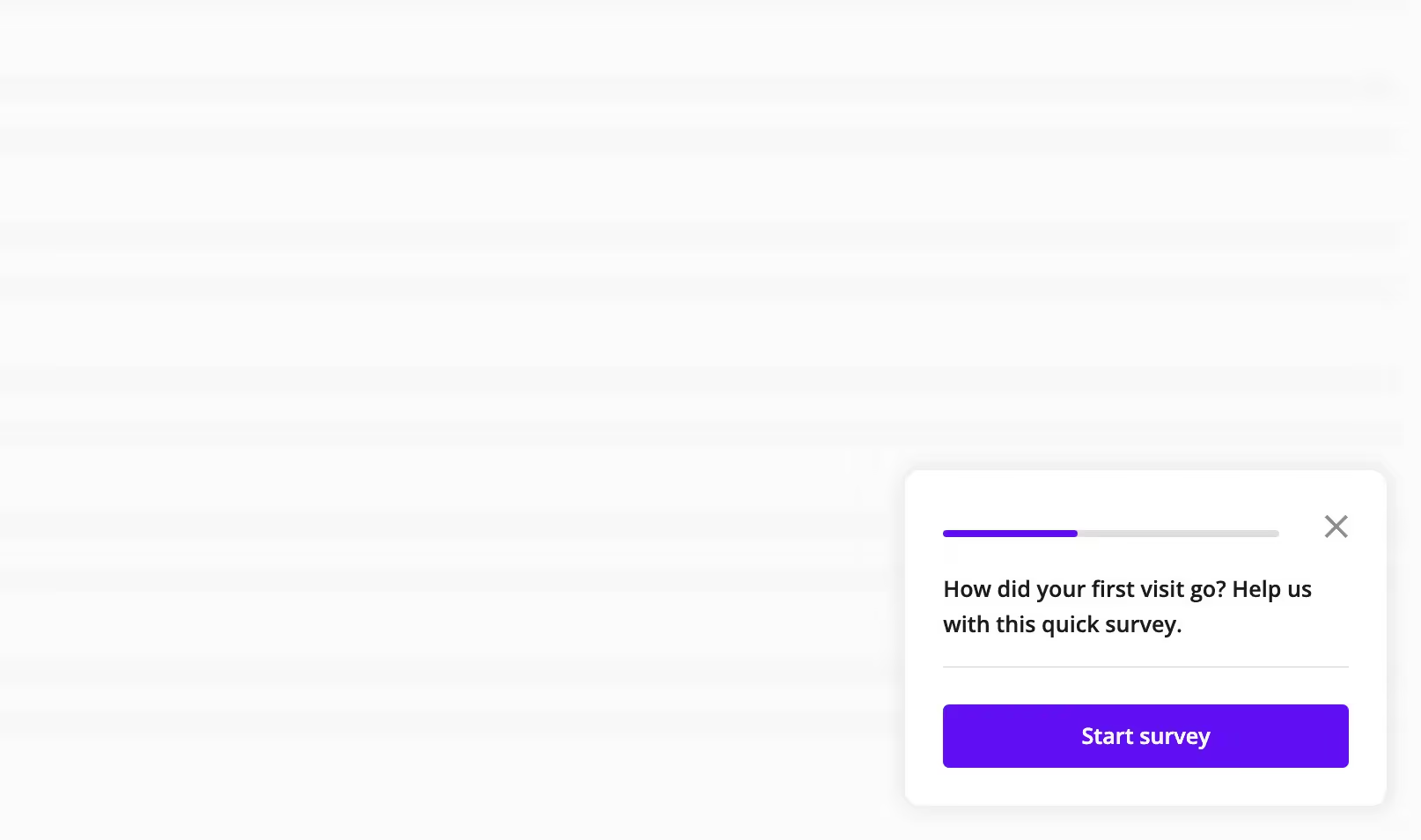
Email Surveys
When you need to ask more questions without disrupting the user experience, email surveys offer a middle ground between microsurveys and customer interviews. They allow for a deeper exploration of customer thoughts and assumption testing with unmoderated tests.
Product Analytics
Product analytics provide insights into how customers navigate your product. Regularly checking analytics tools helps maintain a big-picture view of user behavior and product performance. Set clear goals and engagement metrics, democratize access to tools, and routinely analyze trends and changes to support your discovery process.
Feedback button
The feedback button is a way to passively gather user insights. It works like a pop-up survey—you can target specific audiences, use different feedback buttons in different places, and design it on-brand, so it's a non-intrusive addition to your website.
The best part? You get genuine feedback that the users initiate.
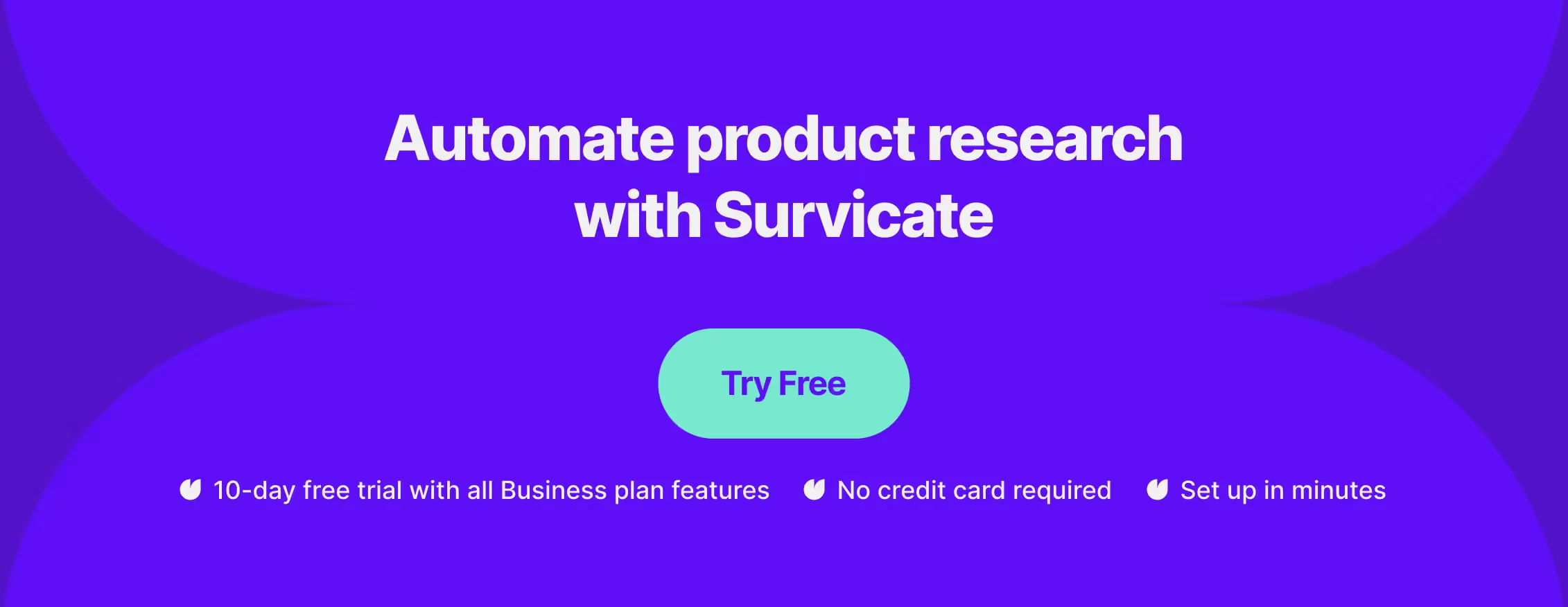
Manage your customer feedback to uncover hidden user needs
Product discovery is a process that centers on user problems. You cannot move forward without collecting feedback. The reality is you cannot, and maybe even don't have to discuss every little thing during customer interviews.
Especially with all the other feedback collection methods that can kick in and do the job. They will not replace talking to your customers but will season your research with the right amount of user perspective.
Try it yourself with Survicate Our 10-day free trial gives you access to all Business Plan features. Sign up now!








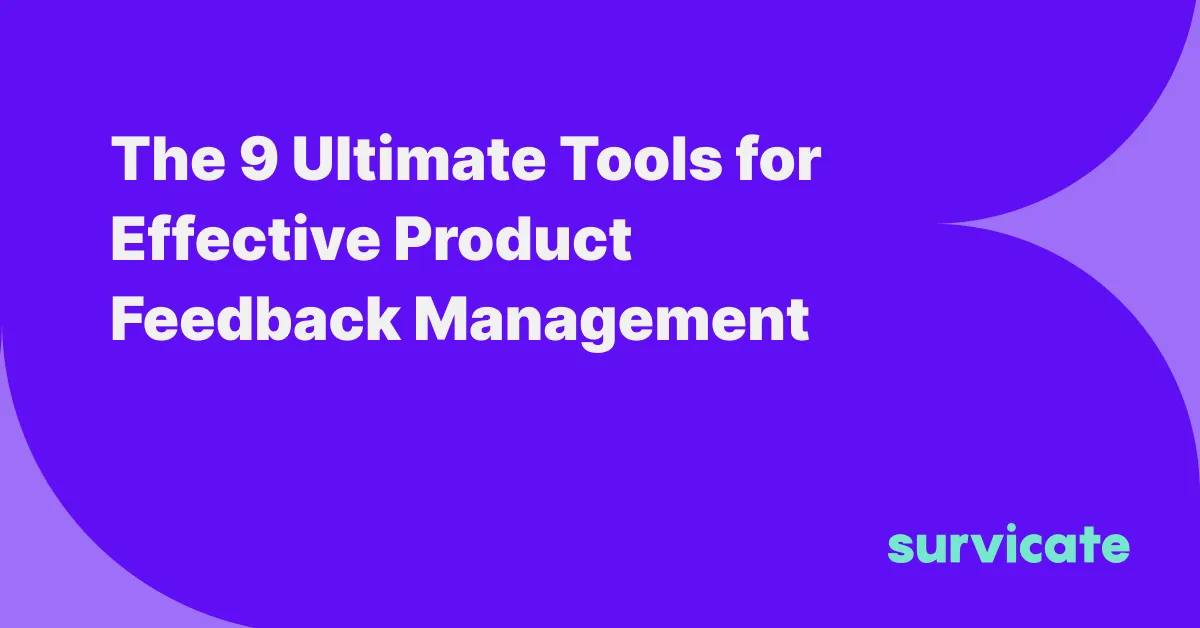
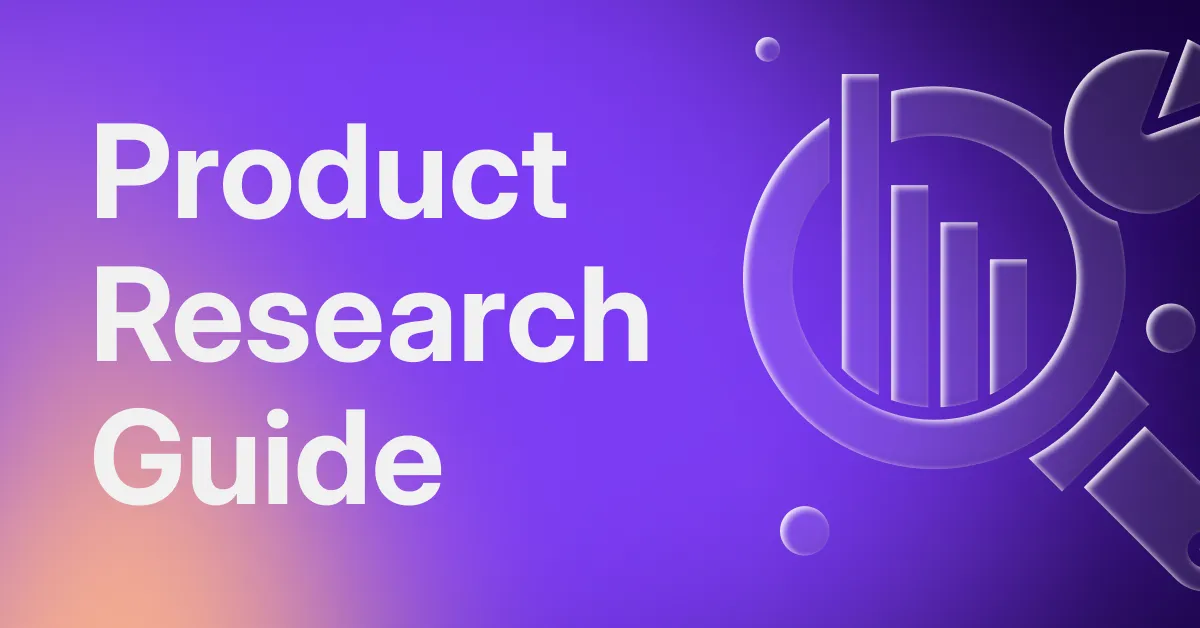

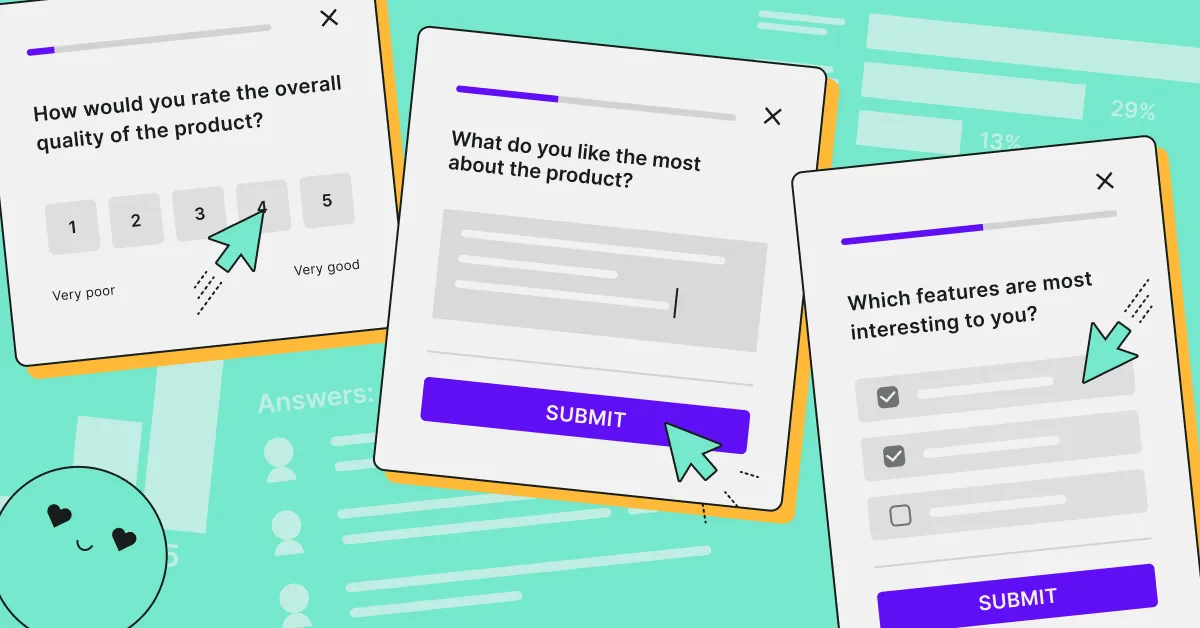
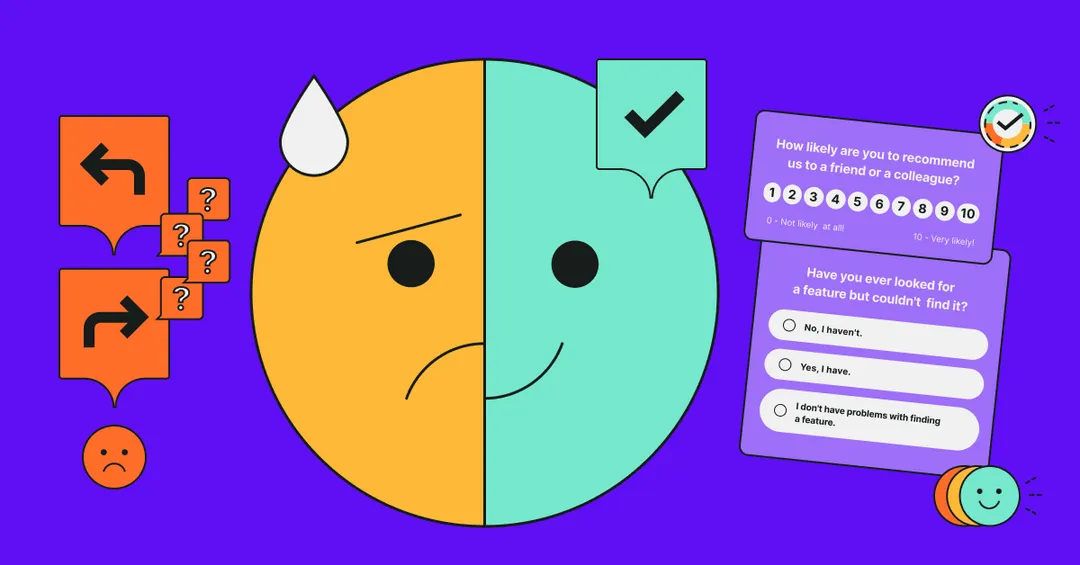
.webp)
.webp)
.svg)

.svg)


